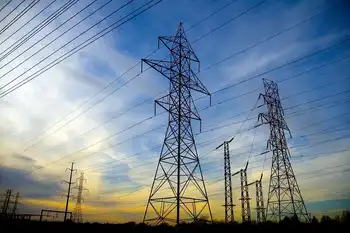Turbine shortage to leave some Scottish communities in the dark
By The Observer
Substation Relay Protection Training
Our customized live online or in‑person group training can be delivered to your staff at your location.

- Live Online
- 12 hours Instructor-led
- Group Training Available
Plans to cut carbon dioxide emissions and meet more of Britain's energy needs by an expansion of offshore wind farms have had to be revised, because experts now believe the chances of building them before 2010 at the earliest is unlikely.
“There is a worldwide shortage of wind turbines,” said Dr Gordon Edge, director of economics and markets at the British Wind Energy Association, who claimed that a recent series of tax credits introduced in the US for the American wind power industry had sparked a construction boom.
“The US industry is going hell for leather at the moment and relying on imports of wind turbines from Europe. All new projects are having to negotiate a long time in advance. People are ordering turbines now for delivery in 2009 and smaller players with not so much market power are losing out even more. Globally, it's going to take two or three years for us to catch up with demand.”
There are now 1,866 turbines in operation at 148 sites in the UK, with an additional 352 sites either under construction or planned. For many rural communities in Scotland and the rest of the UK, wind farms have long been seen as a potential economic boom and several small communities have set up their own projects.
The island of Gigha is often held up as an example of how small communities can cash in on the natural resource of wind power. Since organising a community buyout of the island, its population has increased by more than 50 per cent, reversing 300 years of decline. Several new businesses have been started up, including Gigha Renewable Energy - a small wind farm that generates more than enough electricity for the island and sells the rest to the National Grid for about £100,000 a year.
Many other Scottish communities followed suit but, as the clamour for turbines increases, the dream of self-sufficiency is in the doldrums as supply is outstripped by demand.
At least four communities in the Highlands and Islands have put their plans for self-sufficiency on hold as manufacturers ignore their pleas for turbines in favour of bigger, more lucrative contracts.
“A lot of the turbine manufacturers won't even talk to small community projects looking for just one, two or three turbines,” said Ian McLean, of Renewable Devices Energy Solutions, an Edinburgh-based company that has been involved in the development of about a dozen small wind farms.
“Costs have gone up dramatically because of the Chinese buying up all the raw materials and the US snapping up every turbine they can get their hands on. Unless you are a big developer looking to buy a lot of turbines in one go, most big manufacturers aren't interested.”
The Highlands and Islands Community Energy Company is assisting 28 local energy schemes and trying to combine orders so that they can negotiate more easily with manufacturers. According to David Stephenson, chairman of Westray Renewable Energy, a turbine costing about £700,000 could bring in an estimated £3m-£4m over 20 years and help communities become self-sufficient.
However, despite planning permission and the offer of a grid connection, the island can't find any manufacturer willing to supply it with a single turbine.
“Unfortunately we have been hoist by our own successful global petard. A number of factors have conspired against us,” said a spokeswoman for the British Wind Energy Association.











